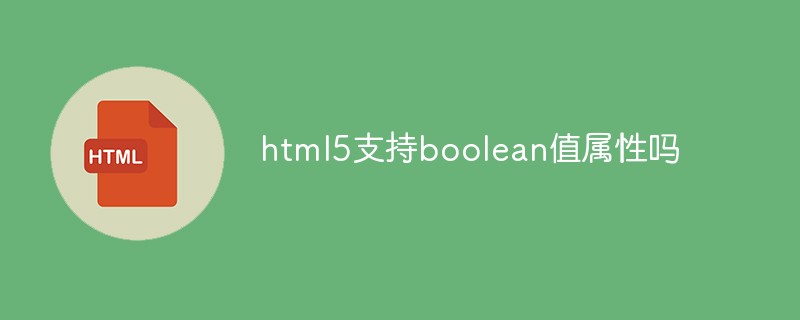This article brings you some details that can be optimized in HTML5. It has certain reference value. Friends in need can refer to it. I hope it will be helpful to you.
Introducing some recently organized optimization details. I won’t talk about image compression, this is what optimization must do. Today I will talk about the details of optimization that everyone can cultivate when writing code.
Do not abuse float. Don't abuse web fonts.
Float requires a large amount of calculation during rendering, and will be off-standard and collapsed. We can use flex layout instead. The introduction of web fonts requires a lot of effort, so it is best to mention it to the designer and not too much.
Avoid redundant style settings in css.
color, font, line-height, etc. can all be inherited, so if their child elements have the same attributes, they must be written repeatedly, especially font-family.
A complex method that can cache the return value of a function.
function cached (fn) {
var cache = Object.create(null);
return (function cachedFn (str) {
var hit = cache[str];
return hit || (cache[str] = fn(str))
})
};
var fk = function (str) {
return str.charAt(0).toUpperCase() + str.slice(1)
}
var cacheFk = cached(fk)
// 1 step
cacheFk('ui')
//2 step
cacheFk('ui')
This is a piece of code I found when I was looking at the vue source code. Its function is to cache the value of a complex function and avoid repeated calculations if the parameters are the same. But the thing to note here is that this caching function is done through closures, so there are some trade-offs.
Reduce layout as much as possible.
// 触发两次 layout var newWidth = p.offsetWidth + 50; p.style.width = newWidth + 'px'; var newHeight = p.offsetHeight + 50; p.style.height = newHeight + 'px'; // 只触发一次 layout var newWidth = p.offsetWidth + 50; var newHeight = p.offsetHeight + 50; p.style.width = newWidth + 'px'; p.style.height = newHeight + 'px';
All operations that can trigger layout will be temporarily put into the layout-queue. When it must be updated, the results of all operations in the entire queue will be calculated, so that only Perform a layout to improve performance.
Animation elements are best off-label and do not affect other modules. This is also done so as not to affect other elements.
transform instead of position.
To do some CSS displacement effects, it is best to use transform instead of positioning. When I first started, I used position to make animation cards~~~
Select the dom element and use the id, but do not define the id for setting the css.
If you use the id selector, do not add other class constraints. Defining too many IDs will reduce reusability and make maintenance more difficult, so it is not recommended to use multiple IDs in CSS.
When using length multiple times, use a variable to save it.
var len = dom.length; for(var i = 0;i <p>The advantage of this is that you don’t have to calculate the length of the dom every time you loop. </p>
requestAnimationFrame replaces setTimeout
var start = null;
var element = document.getElementById('SomeElementYouWantToAnimate');
element.style.position = 'absolute';
function step(timestamp) {
if (!start) start = timestamp;
var progress = timestamp - start;
element.style.left = Math.min(progress / 10, 200) + 'px';
if (progress <p>requestAnimationFrame is a timer that does not need to set the time. It runs every 1/60s. This is based on the browser refresh. Depends on the number of frames. But compatibility is a problem. If you use it, you need to write it well. </p>
If possible, try to avoid global searches.
//dom = document.querySelector("#id");
function test() {
dom = document.querySelector("#id");
}
For example, if you only use dom in the test, do not define it globally, because it will be searched in the internal scope of the test function during execution, which will be faster.
Do not use for in unless you don’t know the length of the traversal or the traversal object
function t1(){ //20ms
var i = 0;
for(item in anObj) {
i++
}
if( i === 100000){
console.log('for in ok')
}
}
function t2(){ //4ms
var len = anObj.length;
var i = 0;
for(var i = 0 ;i <p>This is my own test loop of an array of 100,000 elements. The resulting execution time (see code). So it's best not to use it, generally traversing objects will not be used in practice. If there are special circumstances when traversing objects, you should also pay attention! ! ! The things traversed are not themselves. I thought that for in would traverse its prototype chain. </p>
Skeleton screen
This is to enhance the user experience, similar to the enhanced version of loading. There are automated generation solutions. You can take a look if you are interested.
ios prohibits the page from identifying mobile phone numbers. Android prohibits recognition of email addresses.
<meta> <meta>
Head css bottom js.
As everyone knows, js will block the parsing of dom and increase the white screen time. So be sure to pay attention.
In fact, there are many details in optimization, so you must cultivate your coding habits, accumulate a little, and slowly accumulate, the quality of the code will definitely be different.
The above is the detailed content of An introduction to some details that can be optimized in HTML5. For more information, please follow other related articles on the PHP Chinese website!
 HTML超文本标记语言--超在那里?(文档分析)Aug 02, 2022 pm 06:04 PM
HTML超文本标记语言--超在那里?(文档分析)Aug 02, 2022 pm 06:04 PM本篇文章带大家了解一下HTML(超文本标记语言),介绍一下HTML的本质,HTML文档的结构、HTML文档的基本标签和图像标签、列表、表格标签、媒体元素、表单,希望对大家有所帮助!
 html和css算编程语言吗Sep 21, 2022 pm 04:09 PM
html和css算编程语言吗Sep 21, 2022 pm 04:09 PM不算。html是一种用来告知浏览器如何组织页面的标记语言,而CSS是一种用来表现HTML或XML等文件样式的样式设计语言;html和css不具备很强的逻辑性和流程控制功能,缺乏灵活性,且html和css不能按照人类的设计对一件工作进行重复的循环,直至得到让人类满意的答案。
 web前端笔试题库之HTML篇Apr 21, 2022 am 11:56 AM
web前端笔试题库之HTML篇Apr 21, 2022 am 11:56 AM总结了一些web前端面试(笔试)题分享给大家,本篇文章就先给大家分享HTML部分的笔试题(附答案),大家可以自己做做,看看能答对几个!
 HTML5中画布标签是什么May 18, 2022 pm 04:55 PM
HTML5中画布标签是什么May 18, 2022 pm 04:55 PMHTML5中画布标签是“<canvas>”。canvas标签用于图形的绘制,它只是一个矩形的图形容器,绘制图形必须通过脚本(通常是JavaScript)来完成;开发者可利用多种js方法来在canvas中绘制路径、盒、圆、字符以及添加图像等。
 html5废弃了哪个列表标签Jun 01, 2022 pm 06:32 PM
html5废弃了哪个列表标签Jun 01, 2022 pm 06:32 PMhtml5废弃了dir列表标签。dir标签被用来定义目录列表,一般和li标签配合使用,在dir标签对中通过li标签来设置列表项,语法“<dir><li>列表项值</li>...</dir>”。HTML5已经不支持dir,可使用ul标签取代。
 html中document是什么Jun 17, 2022 pm 04:18 PM
html中document是什么Jun 17, 2022 pm 04:18 PM在html中,document是文档对象的意思,代表浏览器窗口的文档;document对象是window对象的子对象,所以可通过“window.document”属性对其进行访问,每个载入浏览器的HTML文档都会成为Document对象。
 html5支持boolean值属性吗Apr 22, 2022 pm 04:56 PM
html5支持boolean值属性吗Apr 22, 2022 pm 04:56 PMhtml5支持boolean值属性;boolean值属性指是属性值为true或者false的属性,如input元素中的disabled属性,不使用该属性表示值为flase,不禁用元素,使用该属性可以不设置属性值表示值为true,禁用元素。


Hot AI Tools

Undresser.AI Undress
AI-powered app for creating realistic nude photos

AI Clothes Remover
Online AI tool for removing clothes from photos.

Undress AI Tool
Undress images for free

Clothoff.io
AI clothes remover

AI Hentai Generator
Generate AI Hentai for free.

Hot Article

Hot Tools

PhpStorm Mac version
The latest (2018.2.1) professional PHP integrated development tool

Safe Exam Browser
Safe Exam Browser is a secure browser environment for taking online exams securely. This software turns any computer into a secure workstation. It controls access to any utility and prevents students from using unauthorized resources.

SublimeText3 English version
Recommended: Win version, supports code prompts!

Dreamweaver CS6
Visual web development tools

SublimeText3 Mac version
God-level code editing software (SublimeText3)







